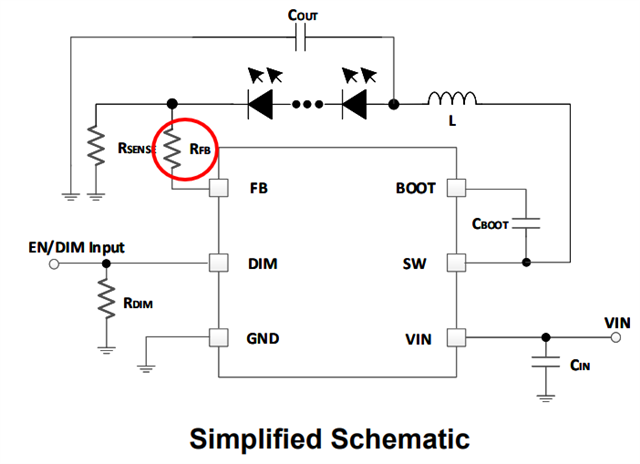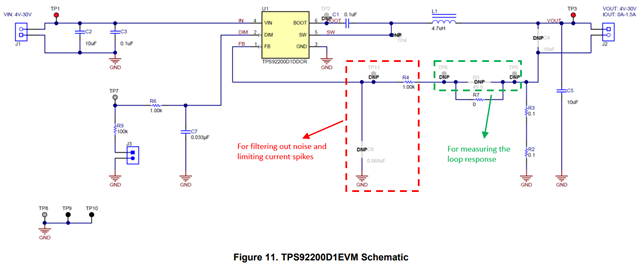Other Parts Discussed in Thread: TPS92200D1EVM, TPS92200,
Dear TI team
I have a question related to the content of the thread below.
The link above says that Rfb is used to measure the loop response and can be replaced by 0Ω if the loop is not being measured.
If RFB is not used (RFB = 0Ω), is there any possibility that the noise immunity will decrease? (Or could it cause other problems?)
Also, 1.00kΩ (R4) is implemented on the EVM, but how is this value determined?
Best Regards,
Taroimo






